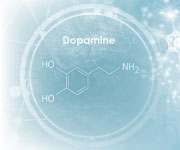

Boxes show computationally defined regions-of-interest (ROIs) for analysis.

The heatmap shows the pattern of dLight1.2 expression. When dopamine (DA) is released by a nearby presynaptic terminal, it binds to dLight1, causing an increase in fluorescence of cpGFP.ī) An example of in vivo 2-photon dLight1 imaging in cortex through a cranial window. also generated a mutated version of dLight1 that does not bind dopamine, providing a reliable control for future experiments.Ĭompatibility of dLight1 with existing optical technologiesĪ) DLight1 was created by replacing the third intracellular loop on a human dopamine receptor with a circularly permuted green fluorescent protein (cpGFP) module.

In general, they observed a tradeoff between dynamic range (ΔF/F max) and apparent affinity, although continued engineering of dLight1 may eventually overcome this limitation. generated several versions of dLight1 (1–5) with varying dynamic ranges and affinities for dopamine, which could be useful for different types of studies. Thus, the expression of dLight1 does not appear to interfere with native GPCR signaling. The resulting GPCR binds dopamine, causing an increase in cpGFP fluorescence without activating downstream signaling cascades (cAMP). DLight1 was created by replacing the third intracellular loop on a human dopamine receptor (D1, D2, or D4) with a circularly permuted green fluorescent protein (cpGFP) module from GCaMP6 ( Figure 1A). engineered dLight1, a genetically-encoded fluorescent dopamine indicator capable of sensing dopamine transients in awake, behaving animals.ĭopamine receptors are members of the G-protein coupled receptor (GPCR) superfamily, which have seven transmembrane domains. The ability to precisely measure the release of neuromodulators such as dopamine would offer great insight into mechanisms of neuromodulatory action, especially when multiplexed with other emerging tools in neuroscience. As our ability to precisely monitor and manipulate neuronal activity in vivo - for example using genetically-encoded calcium indicators and optogenetics - has advanced in recent years, this need for neuromodulatory sensors has become even more apparent. A major mechanism for this fast adaptation is through neuromodulation: neuromodulators such as dopamine, serotonin, and norephinephrine can quickly yet reversibly reconfigure neural circuits by altering the intrinsic and synaptic properties of their target neurons.Ī major challenge in the study of neuromodulation has been the ability to detect neuromodulatory chemicals in vivo at high spatiotemporal resolution. One of the most remarkable aspects of the nervous system is its flexibility: neural circuits can adapt an organism’s behavior to an astonishing array of conditions, including adaptations on short time scales that would be impossible to implement via circuit rewiring.


 0 kommentar(er)
0 kommentar(er)
